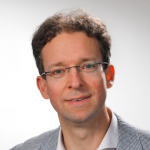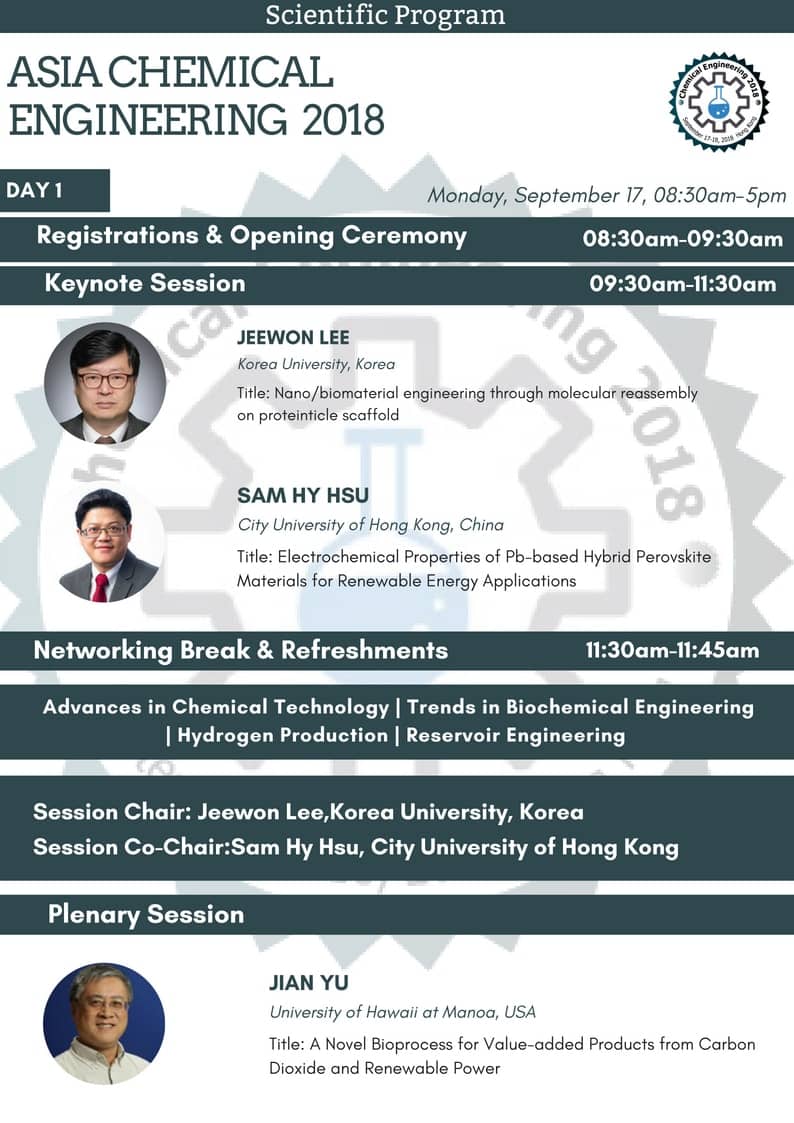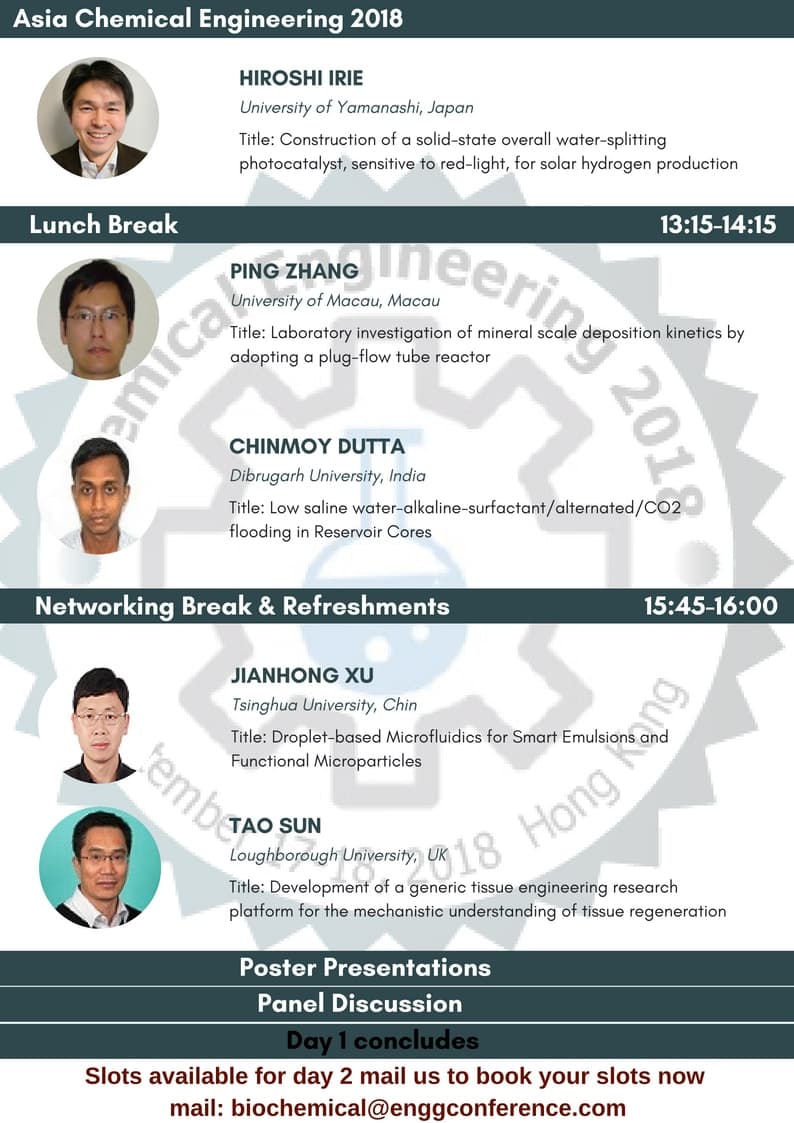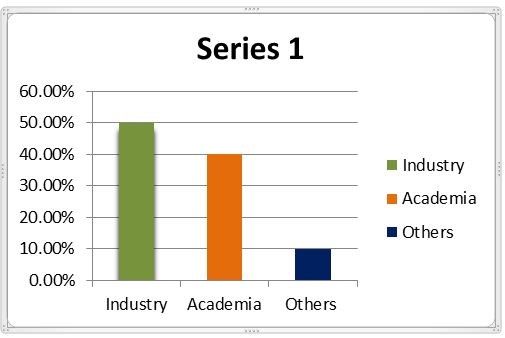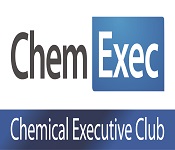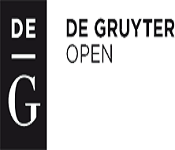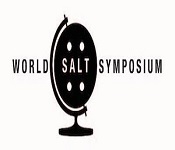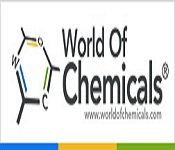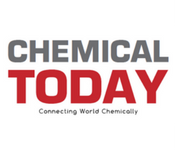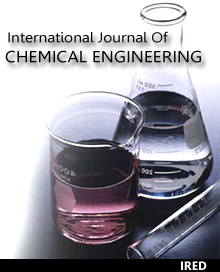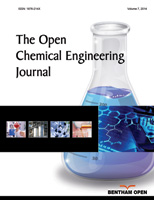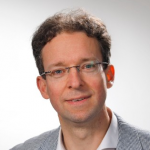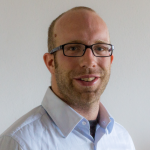Theme: Evolution of Chemical Engineering : Back to the Future
Asia Chemical Engineering 2018
Chemical Engineering conferences welcomes you to attend the 6th Asia Pacific Congress on chemical and Biochemical Engineering during September 17-18, 2018 Hong Kong. We cordially invite all the interested participants in sharing their knowledge, research and gaining the information in the arena of Chemical and its allied areas.
Conferences Series LLC Organizes 1000+ Conferences Every Year across USA, Europe & Asia with support from 1000 more scientific societies and Publishes 500+ Open access journals which contains over 30000 eminent personalities, reputed scientists as editorial board members.
Chemical Engineering 2018 provides a platform for researcher scholars, scientists and academic people to share and globalize their research work while the participants from industry/ business sectors can promote their products thus felicitating dissemination of knowledge. We anticipate more than 300+participants around the globe with thought provoking keynote lectures, oral and poster presentations. The attending delegates include Editorial Board Members of related journals. The scope of Chemical Engineering 2018 is to bring the advancements in the field of Chemical, Biochemical and its allied areas.
Who should attend?
- Chemical Engineering Professors
- Chemical Technology Societies
- Research Fellows of Chemical Engineering/Biochemical Engineering/ Polymer Science
- Chemical Scientists
- Chemical Engineering Associations
- Advanced Chemical Engineers
- Petroleum Technology Students
- Chemists
- Chemisrty Graduates
- Chemical Industries
- Biotechnologists
- Chemical Industrialists
- Petrochemical Industries
Conference Keywords
- Chemical Engineering:
- Bioprocessing:
- Water Technology:
- Water Science:
- Chemical Reactor:
- Chemical Reaction Engineering:
- Transport Phenomena:
- Hazard Analysis:
- Food Technology:
- Food Science:
- Process Safety:
- Green Catalysis:
- Chemical Technology:
- Biochemical Engineering:
- Hydrogen Production:
- Modeling and Simulation:
- Petrochemicals:
- Petroleum:
- Reservoir Engineering:
- Agrochemicals:
It is the branch of engineering which deals with the study of mass transfer fundamentals, food technology, biochemical engineering etc. Many industries use variety of chemicals and different technologies for the purpose of conversion of raw material into a useful product using several processes like Mixing, scrubbing, cleansing, cleaning, filtering and many more.
It is a technique where the living cells or their components are used to produce the desired product. The main principle of bioprocessing is energy and Mass transport.The desired product may be a Gene or Protein.
It is the Process or Technique used for the treatment of polluted water.water pollution occur by many ways like industrial waste, sewage pollution and waste water, mining activities, marine dumping etc
It is defined as the study of water availability, water pollution, waste water treatment. Water is most abundantly available liquid in nature, there are many resources of water are present like ground water, rain water, river water, frozen water.
These are the type of enclosed vessels in which the reaction takes place to produce the required products it includes variety of process like agitation, Mixing, absorbing, adsorbing etc
Chemical Reaction Engineering:
It is defined as studying and optimizing the chemical reactions for the better designing of rectors by considering mainly two factors like mass transfer and heat transfer.
It includes the study of heat conduction, fluid flow, molecular diffusion, radiation, electric charge transfer etc. it is been always trending topic in Chemical engineering.
It is defined as the process of recognizing the hazard which may be arose from natural systems or by the unwanted in activities.
Hazards are divided into many types mainly:
It is the branch of Food Science which deals with the production processes that makes food this include many major processes they are as followed.
It is the process of making up of food underlying food processing. Food technology is the application of food science to the selection, preservation, processing, packaging, distribution, and use of safe food
It focuses on preventing fires explosion fires and toxic releases associated with loss of containment of energy or dangerous substances such as chemicals and petroleum products.
Green chemistry has always been a lively research field. In the time period, the emphasis of catalysis research has significantly shifted and spread from traditional applications in green chemistry. Green catalysis is discussed in relation to heterogeneous catalysis that mainly target solid acid and base catalysis for the synthesis of fine chemicals.
It can be defined as the process of preparation of individuals for work as analytical technicians in chemical laboratories or plants. It is associated with bulk manufacturing of chemicals.
it is the process of designing and construction of processes which involves biological organism or molecule.
Water (H2O) can be split into hydrogen (H2) and oxygen (O2) using electrolysis or solar energy. Microorganisms such as bacteria and algae can also produce hydrogen through biological processes.
Modeling and Simulation
It deals with the model, mathematical or logical representation of system. Or Modeling is a way to create a virtual representation of a real-world system that includes software and hardware
It can be defined as chemical obtained from petroleum and other natural gas. Any of a large number of chemicals made from petroleum or natural gas. Important petrochemicals include benzene, ammonia, acetylene, and polystyrene. Petrochemicals are used to produce a wide variety of materials, such as plastics, explosives, fertilizers, and synthetic fibers.
Petroleum are also obtained from other fossil fuels, such as coal or natural gas, or renewable sources such as corn or sugar cane. rock oil is a general term for crude oil and natural gas. Primary source of automotive fuels and lubricant oils, petroleum is a complex mixture of hydrocarbons and paraffins.
Reservoir engineering is a branch of petroleum engineering that applies scientific principles to the drainage problems arising during the development and production of oil and gas reservoirs to obtain a high economic recovery. A reservoir engineer is concerned with underground oil and gas reserves, specifically finding the most efficient way to extract their resources.
agrochemical or agrichemical is a Agrochemicals are mainly introduced into the market for the purpose to protect Crops from the pests, insects and to improve quality of the crop yield. Many agrochemicals are toxic in nature and storing them in a bulk may lead to the severe environmental and health risks because of this reason usage of these types chemicals are highly regulated. contraction of agricultural chemical, is a chemical product used in agriculture.
Track 1: Recent development in Catalysis
This session mainly focuses of catalyst and catalysis.Catalysis is a process in which the rate of any reaction is altered which may be accelerated or retarded.
It is achieved by addition of a substance which will remain unchanged at the end of reaction called as catalyst.
Types of catalysis:
- Homogeneous catalysis: it is a type of catalyst in which the reactants and the catalyst both will remain in the same state even after the reaction.
- Heterogeneous Catalysis: in this type of catalysis, the catalyst and reactants will be in different physical state this process is also called as contact or surface catalysis.
The global market volume for refinery catalysts should reach 2,234.3 metric kilotons from 2,019 metric kilotons during the time period of 2016 to 2021.
Track 2: Advances in Chemical Technology
In this session of chemical technology, we deal with the preparation of individuals for work as analytical technicians in chemical laboratories or plants associated with bulk productions of chemicals, environmental engineering concerns, pharmaceuticals, or general analysis. Chemical technologist mainly deals with the designing of the chemical process or the experiments. Chemical technologists are more like the technician who assists the chemical engineers in designing of the chemical processes in the chemical plants. Chemical, petrochemical, and oil(petroleum) refining processes constitute a significant business in the united states.
Because of the various small scale and large scale sellers global chemical mechanical planarization market has now become highly competitive who are competing against one another with respect to quality, quantity, price, distribution, product analysis and marketing, innovation, and improvement.
Bcc estimates total merchant sales of these products in the u.s. Was $4.1 billion in 2010. The total u.s. Primary market value is forecast to get increase at cagr (compound annual growth rate) of about 2.5% to $4.6 billion by 2015.
Track 3: Advanced Surface Chemistry
This session mainly concentrates on the study of physical and Chemical Phenomena which occur at the interface of two phases. Or study of interfaces is known as surface chemistry.
Following are the parts of surface chemistry:
it refers to the decomposition of molecular species onto the surface is known as adsorption.
The molecular species which gets adsorbed on the surface are known as adsorbent and the surface on which molecules gets adsorbed is known as adsorbate
It refers to the process in which one thing is absorbed by the other.
Example: Soaking up of water by the sponge.
The global flocculants market will reach $6.8 billion by 2021 from $5.0 billion in 2016 at a compound annual growth rate of 6.2%, from 2016 to 2021.
Track 4: Major challenges of Chemical Reaction Engineering
This session concentrates on the chemical reactors in which reactions takes place. This is the specialty in the chemical engineering or the industrial engineering which aims at studying and optimizing the chemical reactions for design of the efficient chemical rector design. For the designing of the reactor few important flow phenomena are considered like mass transfer, heat transfer, and reaction kinetics which are helpful in relating the reactor performance to feed composition and operating conditions.
The chemical segment has been dominating the demand for flow chemistry over the past few years.
The flow chemistry in chemical reactions with the need to adopt green engineering have a high rising demand. By 2013 the global flow chemistry market got 35% of segmented account in terms of its revenue.
The global market had reached $5.2 billion in 2015. It is seems to have increase from nearly $5.6 billion to $7.7 billion from 2016 to 2021 at a compound annual growth rate (cagr) of 6.6% for 2016-2021.
Track 5: Trends in Biochemical Engineering
This session focuses on the topic of biochemical engineering, which says that it is the branch of chemical engineering which deals with the designing and manufacturing of the different unit operations involving biological material or living organism. It involves the application of chemical engineering methods and approaches to industrial operations which entirely based on the biological elements.
Main application of biochemical engineering are in petrochemical industry, food processing, pharmaceutical companies, biotechnology, and water treatment industries.
The global market for bioproducts is $466.6 billion in 2016 and it may reach $714.6 billion by 2021 from a compound annual growth rate (cagr) of 8.9%, from 2016 to 2021
In the past few years, the process of large-scale bio-manufacturing has become more practical owing to advancements in technology and the easy availability of machines large enough to produce significantly high volumes of biologics due to progress in expression systems, cell and organ generation, and batch cultures. These advancements have boosted the requirement for equipment as demand for small volume and multiproduct capabilities have enabled facilities to adjust unit operations based on demand without incurring wastages and additional expenses.
Track 6: Agrochemicals
This session of Agrochemicals deals with the chemicals which are related to the field of agriculture like fertilizers, pesticides etc. Agrochemicals are mainly introduced into the market for the purpose to protect crops from the pests, insects and to improve quality of the crop yield. Many agrochemicals are toxic in nature and storing them in a bulk may lead to the severe environmental and health risks because of this reason usage of these types chemicals are highly regulated.
Nowadays in place of these agrochemicals different types of biochemical are used. Which are prepared by different types of biochemical processes. Which are known as bio pesticides these work in non-lethal ways as repellents or disrupting the mating pattern of pests. Which are way better than the organic pesticides.
The agrochemical global market will reach $266.0 billion by 2021.
The agrochemical global market was $213.2 billion in 2016 and it should reach $266.0 billion by 2021 at a compound annual growth rate (cagr) of 4.5%, from 2016 to 2021.based on geography, it is expected that china , japan, and asia pacific will have a high demand in the field of agrochemical and north america and europe are expected to witness sluggish growth in the field of agrochemical market upcoming years.
Track 7: Reservoir Engineering
In this session of reservoir engineering, we deal with the underground gasoline reserves. It is a branch of petroleum engineering specifically working on efficient way to extract resources of oil, petrol and gas. The reservoir engineer mainly works in the field of geology, applied mathematics, basic principles of physics and chemistry for checking and studying the behavior of the liquid and vapor phases of the petroleum, natural gas and water inside the reservoir rock. Reservoir engineer mainly works with subsurface of the earth
The oils and gas price crisis has had a tremendous impact on global exploration and production activities.
Many companies and investors concerned about enhancing already existing projects rather than investing on new projects because of the fall in the prices of products
petroleum engineering is determining the flow related properties such as pressure, volume, temperature, porosity, permeability, etc., of the reservoir fluid and formation to optimize the recovery techniques and production. Reservoir characteristics such as diagenetic history, rock quality, production potential, formation damage during stimulating, petroleum products sensitivity required for new industrial chemicals, etc., can be found through reservoir analysis.
According to market analysis and diagnostics, the global natural gas storage was $562.2 billion in 2015 and it will reach $796.4 billion in 2020, up from registering a compound annual growth rate (cagr) of 7.2% for the period of 2015-2020.
Track 8: Heat Transfer Research Opportunities
heat transfer research covers the entire subjects of the heat transfer which involves the different heat transfer operations like conduction, convection, radiation and it also concentrates on phase changing operations like boiling, solidification. Heat transfer is a disciplinary branch of thermal chemistry which deals with conversion and exchange of thermal energy between physical systems.
A heat exchanger is a equipment which is designed and built for proper heat transfer of any material from one medium to another through a media. The media may be separated by a solid wall to prevent mixing or they may be in direct contact with the different composite materials being processed, which could harm the product. The common example of a heat exchanger is found in an internal combustion engine, in which a circulating fluid known as engine coolant flows through radiator coils and air flows past the coils, thereby cooling the coolant and releasing the heat generated by the engine
The global market for thermal management products are expected to grow from about $10.1 billion in 2013 to $10.6 billion in 2014 and $14.7 billion by 2019 with a compound annual growth rate (cagr) of 6.8% between 2014 and 2019.
Track 9: New Approaches to Mass Transfer
In this session we deal with the mass transfer, mass transfer is the net movement of molecule from one location to another location, usually meant phase, stream, component, or fraction. Mass transfer occurs in many processes like absorption, adsorption, evaporation, distillation. Recent development in the field of mass transfer refers to new approaches to mass transfer.
Examples of mass transfer operations are the evaporation of water from the pond to atmosphere,
Distillation of alcohol, drying of cloths etc.
Evaporative condensing is a mass transfer phenomenon which decreases the heat rejection process using the cooling effect of evaporation. Bottom part of condensing temperature leads to the reduction in workload of the condenser and this helps in the improve of fuel efficiency. This type of condenser is used for condensing some substance from its gaseous state to liquid state and helps to boost its cooling effect.
Many different types of evaporative condenser are available to use according to its application across many different sectors from household sector to commercial sector. Large evaporative condensing units are generally used as large air conditioning units for commercial purposes and with the rising performance efficiency the market for evaporative condensing units are expected to achieve growing market demand during the forecasting algorithm.
The global market analysis for mass transfer equipment (freeze dryer) and related contract manufacturing organization (cmo) services was $15.9 billion in 2012. The composite revenues projected for 2013 are nearly $17.6 billion and $28.7 billion in 2018, a compound annual growth rate (cagr) of 10.4% between 2013 and 2018.
Track 10: Chemical Engineering Thermodynamics
This session focuses on modern thermodynamics or thermodynamics which is the study of heat and temperature and their relationship with the energy and work. Thermodynamics is branch of physics. The main application of thermodynamics was mechanical heat engines later it was extended chemical compounds and chemical reactions which is studied under chemical engineering thermodynamics.
The global market for gasifier was 595 annual new units in 2012 and is might get increased to 644 annual new units in 2013 and 857 annual new units by 2017 at compound annual growth rate (cagr) of 7.6%.
Track 11: Development in Food Technology
This session of food technology mainly deals with the food safety, food toxicology, food spoilage. Food technology is a branch of food science that deals with production processes which helps in making of food. Because of extensive food research, a systematic investigation into a variety of food’s properties and compositions we consume every day. After the initial stages of research and development comes the mass production of food products using principles of food technology. These interrelated fields contribute to the food industry.
mass spectrometry in food technology is a powerful tool to analyze small molecules with even an isotope difference and extensively used in food biotechnology, food processing and food toxicology. Mass spectrometry works by ionizing chemical compounds to generate charged molecules or molecule fragments and measuring their mass-to-charge ratios.
Because of the increase in the incidence of food contamination the global food safety testing market has witnessed impressive growth over the last few years because of which there is a growing demand for food safety testing by food industries. Owing to increasing awareness about foodborne diseases and various technologically advanced techniques and equipment deployed for food safety testing, the market for food safety testing has been treading along a healthy growth path over the past few years and the market is expected to continue to exhibit strong growth over the next few years as well. The vast expansion of the global food and beverages industry, coupled with the growth of the food industry, has also been a key factor driving the growth of the global food safety testing market.
The market survey shows that the advanced food packaging solutions had got increases from $31.4 billion to $33.3 billion from 2011 to 2012. The market growth looks promising and the overall market value for 2017 is projected to be nearly $44.3 billion, after increasing at a compound annual growth rate (cagr) of 5.8%.
Track 12: Modeling and Simulation
This session refers to modeling and simulation which deals with the model, mathematical or logical representation of a system. Modeling and simulation facilitate understanding a system’s behavior without testing the system in the real world. Simulation can give support to experimentation that occurs completely in software, or in human-in-the-loop environments where simulation represents systems that generates data needed to meet experiment objectives. Simulation can also be used in the training of persons using a virtual environment that would otherwise be difficult or expensive to produce.
The global bioinformatics market was nearly $7.5 billion by 2017 which was valued at nearly $2.8 billion in 2011, nearly $3.2 billion in 2012, and was forecasted to grow with increase compound annual growth rate (cagr) of 18.7%.
Track 13: Petroleum and Petrochemicals research
In this session we deal with the petrol, petrochemistry and petrochemicals, petroleum is a naturally occurring flammable liquid consisting of a complex mixture of hydrocarbons of various molecular weights and other liquid organic compound, that are found under geological rocks beneath the earth's surface. The process of transformation of crude oil into the useful products is known as the petroleum refining.
the compounds obtained after the process of refining are called as petrochemicals and some of the petrochemicals can be obtained from the fossil fuels such as coal, natural gas, petrol etc. The catalysts for chemical analysis, petrochemical, and oil refining processes constitute a significant business in the united state.
According to market analysis done on the petrochemicals, the research study says that the global market for petrochemicals is expected to reach a value of us$885.1 billion by the end of 2020. The market will grow with a cagr 6.4% from 2014 to 2020.
Track 14: Major challenges of Nano Technology
This session deals with nano technology and its application, nanotechnology is a science and technology concerned with the study of particles at the size of nano scale that is its size ranges between 1-100 nano meter. It can also be stated that manipulation of matter on an atomic, molecular, and supra molecular scale. Nanotechnology has a huge range of applications, like it can create many new materials and devices such as in nanomedicine, nanoelectronics, biomaterials energy production, and consumer products. It also raises many of the same issues as any new technology, including concerns about the toxicity and environmental impact of nanomaterials.
Nano technology impacts many factors in that one of them is food science from earlier stages of food irrigation to the final step of food packing. Companies are developing nanomaterials that will make a difference not only in the taste of food, but also in food safety, and the health benefits that food delivers.
according to market analysis global nanomaterial market was estimated to total nearly $106 billion in 2011 and $112 billion in 2012. The market might reach $188 billion by 2017, and have a five-year compound annual growth rate (cagr) of 10.8%.
Track 15: Current advances of Industrial Separation Techniques
This session entirely deals with industrial separation techniques, which are technical procedures which are used in industry to separate a product from impurities. The original mixture may either be a natural resource or the product of a chemical reaction. Different types of industrial separation processes are industrial crystallization, filtration, distillation, vacuum distillation, chromatography
bcc research estimates the total global market for separation and purification equipment was about $11.2 billion in 2013 and $11.4 billion in 2014. This global market for industrial separation equipment’s will reach $14.3 billion by 2019, with a compound annual growth(cagr) of 4.7%.
Track 16: Water Science and Technology Advancement
In this session of water science and technology we deal with the different water availability, water pollution, and waste water treatment. Water is most abundantly available liquid in nature, there are many resources of water are present like ground water, rain water, river water, frozen water.
The contamination of water bodies is known as the water pollution. Which is caused in several way like industrial waste, sewage pollution and waste water, mining activities, marine dumping, accidental oil leakage, and by chemical fertilizers and pesticides
The water and wastewater technology market shows that it was $72 billion in 2016 and it was expected to reach $92 billion by 2021 with compound annual growth of 5.0%.
Track 17: Chemical Process Safety and Hazards
This session gives us clear view of process safety, different types of hazards, and effects of hazardous and steps to control them. Chemical process safety is the management skill or blend of engineering which focuses on the preventing catastrophic accidents, near misses, particularly structural collapses, explosions, fires and toxic releases.
Examples of hazards:
1. Liquid hazards (acids, solvents, chemicals etc.)
2. Vapor and fumes (vapors of ammonia, hcl, h2so4 etc.)
3. Flammable materials (petrol, diesel oil etc.)
Types of hazards: environmental hazards, food hazards, bio hazards, natural hazards
These hazards are dangerous to environment and human health that i why a special care is taken to handle these type of compounds and study of all those techniques is studied under the huge branch of chemical engineering known as chemical process safety.
On a recent market analysis, it was found that the global market for hazardous waste management will grow to nearly $33.9 billion by 2019 from $23.8 billion in 2014
Track 18: Hydrogen Production Research
Although hydrogen element is abundant on the earth it is always found as part of another compound, such as water (H2O), and must be separated from the compounds that contain it before it can be used in vehicles. Once separated, it can be used along with oxygen from the air in a fuel cell to produce electricity by an electrochemical process. There are many methods to produce hydrogen. Thermochemical processes use heat and chemical reactions to release hydrogen from organic materials such as fossil fuels and biomass. Water (H2O) can be split into hydrogen (H2) and oxygen (O2) using electrolysis or solar energy. Microorganisms such as bacteria and algae can also produce hydrogen through Biological Engineering.
Related Conferences
- 10th Asia Pacific Congress on Oil and Gas September 17-19, 2018 Beijing, China;
- 5th world congress on Chemical Engineering and Catalysis August 27-28, 2018 Tokyo, Japan;
- 2nd International Biochemical Engineering Conference, June 7-8, 2017 Milan, Italy;
- 5th world Bioenergy Congress, June 29-30, 2017 Madrid, Spain;
- 5th International Bioplastics Conference, July 20-21, 2017 Munich, Germany;
- 7th International Biofuels & Bioenergy Conference, October 2-4, 2017 Toronto, Canada;
- 2nd World Biodiesel Congress, December 4-5, 2017 Atlanta, USA;
- 6th World Biopolymers Congress, September 7-9, 2017 Paris, France;
Related Societies
- Asia Pacific Confederation of Chemical Engineering (apcche);
- Iranian association of Chemical Engineering (iache);
- American Chemical Society (acs);
- American Institute of Chemical Engineers (aiche);
- Association of Energy Engineers (aee);
- Canadian Society for Chemical Engineering (csche);
- National Organization for the Professional Advancement of Black Chemists and Chemical Engineers (nobcche);
- Bangladesh Chemical Society;
- Brunei Chemical Society;
- Chemical Society located in Taipei, China;
- Chemical Society of Japan;
- Chemical Society of Pakistan;
- Chemical Society of Thailand;
- Chemical Society the South Pacific;
- Chemical Society of Vietnam;
- Chinese Chemical Society;
- Cambodian Chemical Society;
Scope and Importance:-
Chemical and Biochemical Engineering is a broad, diverse and multidisciplinary field. It is continuous interaction with basic disciplines and is also contributing to meet all Grand Societal Challenges. This contribution is such that numerous reports have been produced in recent years in Asia and world - wide, with the aim of drawing a comprehensive picture and proposing coordinated actions towards the establishment of coherent strategies in the field. The present report subscribes to this perspective, with a particular goal which is to contribute to the establishment of a comprehensive view of the role in efficient development of key enabling technologies.
Branches of Chemical Engineering includes:-
· Mass Transfer
· Fluid dynamics
· Environmental engineering
· Heat Transfer
· Thermodynamics
· Biochemicals
· Momentum Transfer
· Petroleum Engineering
· Petrochemicals
· Transport Phenomena
· Chemical Reaction Engineering
· Chemical Technology
· Polymer Science
· Advanced Chemical engineering
About Venue:
As a Special Administrative Region of China, Hong Kong is situated on the southeast coast of China. The city is one of the world's leading financial, banking and trading centres. It is made up of four parts: Hong Kong Island, Kowloon Peninsula, the New Territories and the Outlying Islands. The prosperous island is the centre of economy, politics, entertainment and shopping with its southern part noted for sea shores and ba​ys. Kowloon is another flourishing part where Tsim Sha Tsui, Yau Ma Tei and Mong Kok are the most popular destinations. The New Territories and Outlying Islands are ideal places to experience a peaceful and natural holiday.
Hong Kong serves as an important transport hub between international cities and regions with major cities in Mainland China. The well-developed urban transport system can be used to most places in the city, making traveling convenient and cheap. Different cultures bring food all over the world to this city, so it is a paradise for foodies. After a busy day of traveling, it is highly recommended to appreciate the colourful nightlife. An open city with a wonderful natural harbour, it is a place where various cultures blend harmoniously. British culture can be found everywhere as a result of former colonial rule, while it also preserves traditional customs and the core values of Confucianism that have faded in Mainland China. It is the backdrop for modern movies and pop music that enjoy worldwide recognition.
Why to Attend???
Universal Conference on Chemical and Biochemical Engineering- 2018 which will be the greatest gathering devoted to Chemical and biochemical Engineering
• Professionals giving a chief specialized gathering to detailing and finding out about the most recent new era advancements created over the span of time alongside examining their applications.
• Events incorporate intriguing issues introductions from everywhere throughout the world and expert systems administration with enterprises, driving working gatherings and boards.
• Meet Your Objective Business area with people from and around the world focused on getting some answers concerning Chemical and Biochemical Engineering, this is the most obvious opportunity to accomplish the greatest accumulation of individuals from wherever all through the World.
• Conduct appears, scatter information, meet with current, make a sprinkle with another item offering, and get name affirmation at this event. Generally acclaimed speakers, the most recent techniques, methodologies, and the most breakthrough updates in Polymer science and Engineering are indications of this meeting.
Target Audience:
- Chemical Engineering Professors
- research fellows of Chemical engineering/Biochemical Engineering/ Polymer Science
- Chemical scientists
- Chemical Engineering Associations
- Advanced Chemical Engineers
- Chemists
- Biotechnologists
- Chemical Industrialists
- Petrochemical Industries
Societies/Industries/Universities Associated with Chemical and Biochemical Engineering: -
· American Society for Mass Spectrometry
· American Society of Brewing Chemists
· Association of Analytical Communities (AOAC International)
· Chinese-American Chemical Society
· Chemical Society of Peru
· Chemical Research Society of India
· European Association for Chemical and Molecular Sciences
· Federation of European Biochemical Societies
· International Mass Spectrometry Foundation
· Norwegian Chemical Society
· Royal Australian Chemical Institute
· Canadian Society for Chemical Technology (CSCT)
· Chemical Abstracts Service (CAS)
· Chemical Heritage Foundation (CHF)
· Chemical Institute of Canada (CIC)
· Chemical Society Located in Taipei (CSLT)
· Chemical Society of Japan (CSJ)
· Chemical Society of Nigeria (CSN)
Major Advanced Chemical Associations Around the Globe
· Society of Environmental Toxicology and Chemistry (SETAC)
· Japan Society of Nuclear and Radiochemical Sciences
· Chemical Institute of Canada
· European Photochemical Association
· European Society for Applied Physical Chemistry
· American Association for Clinical Chemistry (AACC)
· American Society for Biochemistry and Molecular Biology (ASBMB)
· International X-ray Absorption Society
· Society of Environmental Toxicology and Chemistry (SETAC)
· World Association of Theoretical and Computational Chemists.
· Federation of European Materials Societies
Major Chemical Engineering Associations in Hong Kong
· Hong Kong - Royal Society of Chemistry
· The Hong Kong Chemical Society
· City University of Hong Kong
· Sinopec Chemical Commercial Holding Hong Kong
· Asian Chemical Editorial Society
Target Audience
Industry 50%
Academia 40%
Others 10%
Figure 1: Target Audience
Top Universities in Hong Kong
- The University of Hong Kong
- Chinese University of Hong Kong
- Hong Kong Polytechnic University
- City University of Hong Kong
- Hong Kong University of Science and Technology
- Hong Kong Baptist University
- Open University of Hong Kong
- Education University of Hong Kong
- Lingnan University
- Hang Seng Management College

Figure 2: Statistical Analysis of Universities
Market Value on Chemical Engineering Research:
Chemicals, the building blocks of the world, represent one of the oldest and largest industries globally. According to American Chemistry Council, the global chemicals industry breached the US$5 trillion sales mark in 2013. Much of these gains in sales can be credited to the escalating demand for chemicals in developing economies. This also makes the chemical industry a growth engine for emerging economies. However, the lack of product differentiation is a key factor preventing large and small chemical companies from achieving better growth.
The next phase of growth in the global chemicals and materials industry will be brought about by renewable and bio based chemicals and materials. The other trend that has been instrumental in expanding the scope of the global chemicals industry is the discovery of shale gas reserves in the United States. Growth markets such as China, Brazil, and India stimulate demand for basic chemicals whereas in developed regions, chemicals formulated for specialized applications will see a progressive rise in demand.
Competition in the global thermochromic materials market is robust with savvy manufacturers trying to outshine one another based on product differentiation. The most commonly used thermochromic materials are leuco dyes and liquid crystals (LCs). At present, the market is being majorly fueled by the demand for smart textiles from the fashion and home furnishing industry. Smart textiles find application in tablecloths that change color upon contact with hot items on the table, ski outfits, chairs whose color shows where a person has been sitting, and apparels with a motif painted on them that changes color. Further, thermochromic inks are applied on packaging products, security printing, and for promotional activities.
One major restraint hobbling the global thermochromic materials market is the fact that they have poor light fastness. Such materials degrade in the presence of UV rays and undergo photochemical fading. Thermochromic inks are also more expensive than conventional inks. This is because the manufacturing process of thermochromic materials is highly specialized and complicated.
Market Growth of Chemicals and materials Research in the last and upcoming ten years:
The global consumption of flame retardant chemicals reached nearly 5.4 billion pounds in 2016. The market should reach 5.6 billion pounds in 2017 and 7.3 billion pounds by 2022, growing at a compound annual growth rate (CAGR) of 5.4%, from 2017 to 2022.
The global agrochemical market should reach $266.0 billion by 2021 from $213.2 billion in 2016 at a compound annual growth rate (CAGR) of 4.5%, from 2016 to 2021.
The global thermochromic materials market, it is expected to expand at a good clip. A report by Transparency Market Research predicts the market to register a CAGR of 9.3% during the period between 2017 and 2025 to become worth US$2.174 bn in 2025 from US$.988 bn in 2016
Apart from the industrial personnel where most of the research work is done, other research communities include:
- Academicians include Student community.
- Researchers include Post docs, Research Associates.
- Scientists include Professors, Associate professors, and Assistant professor.
- Industries include Presidents, CEO’s, and R&D Managers.
Market Report of Advanced Materials:
- The global market is projected to reach $6,000 million by 2020 and register a CAGR of 10.2% between 2015 and 2020 in terms of value.
- The growth in market is estimated to be driven by the increasing demand for aero gel materials from oil & gas and construction applications.
- The North American region remains the largest market, followed by Asia-Pacific. The Europe market is estimated to be growth at a steady rate due to economic recovery in the region along with the increasing concern for the building insulation and energy savings.
- The structural core material market in aerospace interior is estimated to grow from USD 142.2 Million in 2016 to USD 220.2 Million by 2021, at a compound annual growth rate (CAGR) of 9.13% between 2016 and 2021.
- The base year considered for the study is 2015 and the market size is projected between 2016 and 2021. The introduction of safety norms in public transport as well as increasing demand for lightweight and high-performance composite materials in the aerospace & defense, transportation, and energy & power applications are key factors responsible for the growth of the high-temperature composite materials market.
- Global Metallurgy market will develop at a modest 5.4% CAGR from 2014 to 2020. This will result in an increase in the market’s valuation from US$6 bn in 2013 to US$8.7 bn by 2020.
Global chemical production will probably grow by 3.4% in 2017, the same pace as 2016 (+3.4%). We anticipate a marginally higher expansion rate in the advanced economies (2016: +0.9%, 2017: +1.1%). Growth in the emerging markets will presumably weaken somewhat (2016: +5.4%, 2017: +5.1%). The global growth rate of the chemical market will be largely determined by developments in China, which accounts for more than a third of worldwide production. There, the upward trend may continue to slacken but producers in China are nevertheless likely to contribute more than two percentage points to worldwide chemical industry growth. Yet macroeconomic risks in China remain high, therefore, our forecast for global chemical growth is marked by uncertainty.
Chemical production in the European Union is expected to barely grow faster than in 2016. In general, the increase in production will remain modest against the backdrop of a sluggish domestic market. We expect competitive pressure on export markets to remain intense, even though the naphtha-based European chemical industry benefits more from low oil prices than the gas-based production in the United States.
In the United States, we expect somewhat faster growth in chemical production, at just under 2%, as new production capacity, which will also be used for export, comes onstream. Overall chemical growth is likely to decelerate somewhat in the emerging markets of Asia, mainly due to the slowdown in China, which will affect the other developing countries in the region. In Japan, we presume a weak overall economic environment and minimal growth in chemical production. In South America, the anticipated end of the recession in Argentina and Brazil will result in slight growth in chemical production in the region.

Figure 3: Chemical production Data
Today, many materials chemists are synthesizing functional device materials, and the discipline is often seen as directed towards producing materials with function—electrical, optical, or magnetic. Material chemistry is involved in the designing and processing of materials. Global market for catalysts is expected to reach $28.5 billion by 2020, growing at a CAGR (2015 to 2020) of over 3%. Asia-Pacific is having the largest market for catalysts accounting for more than 35% share.

Figure 4: Growth forecast of material chemistry
Global Advanced CBRN Market:
The global chemical, biological, radiological, and nuclear (CBRN) security market is rising at a steady pace globally as demand for effective CBRN protection measures to combat terrorist attacks is at an all-time high. The threat of use of weapons of mass destruction by terrorist organizations have raised alarms to prevent possible attacks with CBRN systems. CBRN security is a rising market to address concerns related to protecting civilian lives and maintenance of economic stability.
In addition, CBRN systems are used for accidental incidents. These include events caused by human or technological errors such as accidental leaks or factory spillage of poisonous gas or liquids. Intentional CBRN incidents occur when CBRN materials are released into the environment with the intention of terrorism or war or when hazardous material is discharged into the environment deliberately.
One of the key factors driving the CBRN security market is increasing demand for CBRN security in developing countries such as India, China, and Brazil among others. In addition, African nations are expected to continue spending incessantly on CBRN surveillance systems to mitigate rising CBRN threats such as Ebola in the regaion. With continual technological advancements and increasing research initiatives worldwide, new-age CBRN security equipment are launched that primarily focus on government organizations, military, and law enforcement agencies.
Transparency Market Research estimates the global CBRN security market to be worth US$15074.8 mn by 2025 increasing from US$9890.0 mn in 2016, expanding at a CAGR of 4.8% between 2017 and 2025.
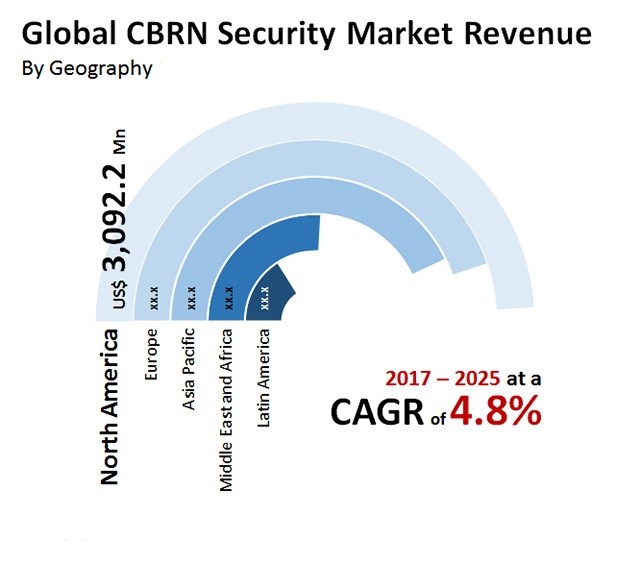
Figure 5: Global CNBR Security Market
Global Aroma Chemicals Market:
Aroma is a complex mixture of individual chemicals behaving according to their unique characteristics. These chemicals have several attributes such as polarity, volatility, stability, and surface activity among others. Among them, the chemicals with weight greater than 300 are called aroma chemicals. Perfumers use comprehensive palette of synthetic and natural aroma chemicals along with technical staff to create a peculiar commercial product.
Until a few years back, household care and personal care were the two primary segments exhibiting the demand for aroma chemicals. However, considering the latest research and development activities, the use of aroma chemicals has successfully penetrated medical and food and beverages industries. Spurred by this and efforts taken by the leading manufacturers to bolster product development and diversification, the global aroma chemicals market is forecast to exhibit a CAGR of 6.2% between 2016 and 2024. At this pace, the market’s valuation is expected to reach US$6.57 bn by the end of 2024. In 2015, the market was valued at US$3.85 bn.
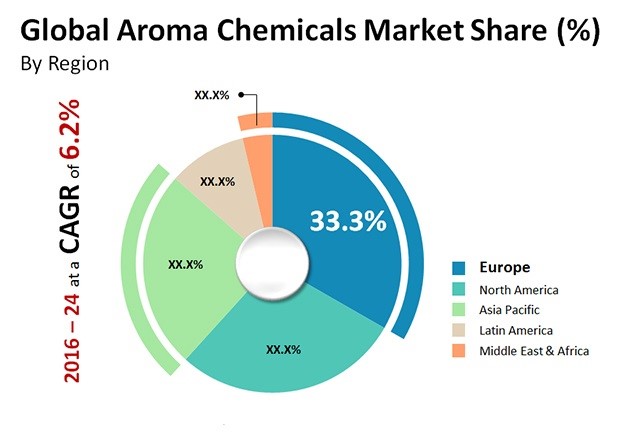
Figure 6: Global Aroma Chemicals Report
Global Steam Boiler Systems Market:
The global market for steam boiler systems is witnessing significant growth in its valuation, thanks to the rising demand for energy across the world. The augmenting need to improve energy efficacy of power plants and power generation process has been fueling the demand for steam boiler systems substantially. The rise in the government initiatives to encourage the usage of steam boiler systems, such as providing rebates and subsidies on their purchase, is also adding to the growth of this market remarkably. However, the high initial, as well as maintenance cost of these systems may limit their uptake, hindering the progress of this market soon.
In 2015, the global steam boiler systems market stood at US$12.0 bn. The opportunity in this market is likely to expand at a CAGR of 5.30% between 2016 and 2024 and is expected to reach US$18.9 bn by the end of 2024.

Figure 7: Global Steam Boiler Report
*Source: BCC Research, Transparency Market Research & Markets and Market
Keynotes and Invited Speakers of past conference
“Asia Chemical Engineering 2018”
The Following are Speakers and Keynotes at chemical Engineering 2018
|
1 |
Jianhong XU |
Tsinghua University China |
|
2 |
Jun Xu |
Tsinghua University China |
|
3 |
Sun Tao |
Loughborough University UK |
|
4 |
Sam HY HSU |
University of Hong Kong, China |
|
5 |
H HIRAO |
University of Hong Kong, Hong Kong |
|
6 |
Adango Miadonye |
Cape Breton University Canada |
|
7 |
Yiu Fai Tsang |
The Education University of Hong Kong |
|
8 |
Mirosław Kwiatkowski |
The AGH University of Science and Technology in Krakow |
Chemical Engineering 2018 provides a platform for researcher scholars, scientists and academic people to share and globalize their research work while the participants from industry/ business sectors can promote their products thus felicitating dissemination of knowledge. We anticipate more than 300 participants around the globe with thought provoking keynote lectures, oral and poster presentations. The attending delegates include Editorial Board Members of related journals. The scope of Chemical Engineering 2018 is to bring the advancements in the field of Chemical, Biochemical and its allied areas.
Who should attend?
• Chemical Engineering Professors | research fellows of Chemical Engineering/Biochemical Engineering/ Polymer Science | Chemical scientists | Chemical Engineering Associations | Advanced Chemical Engineers | Biotechnologists | Chemical Industrialists | Petrochemical Industries | Pesticides Industries
Jianghong XU - Professor Tsinghua University China
 Prof. Dr. Jianhong XU received his B.Sc. and Ph.D. at Tsinghua University in 2002 and 2007 respectively. He continued his research in Tsinghua University as a postdoctor after graduation. He finished the postdoctoral program in May 2009, and became a formal faculty of the Department of Chemical Engineering, Tsinghua University. He had studied as a visiting scholar at Prof. David Weitz lab in Harvard University during 2012.7~2013.6. At present, his research areas are focusing on the microstructured chemical system, multiphase microfluidic technology and functional materials synthesis. He has more than 100 peer-reviewed publications. He got the “Excellent Young Scientists Fund” from the National Natural Science Foundation of China (NSFC) in 2013. In 2016, he was awarded as Young Scholar of “Chang Jiang Scholars Program of China” of MOE.
Prof. Dr. Jianhong XU received his B.Sc. and Ph.D. at Tsinghua University in 2002 and 2007 respectively. He continued his research in Tsinghua University as a postdoctor after graduation. He finished the postdoctoral program in May 2009, and became a formal faculty of the Department of Chemical Engineering, Tsinghua University. He had studied as a visiting scholar at Prof. David Weitz lab in Harvard University during 2012.7~2013.6. At present, his research areas are focusing on the microstructured chemical system, multiphase microfluidic technology and functional materials synthesis. He has more than 100 peer-reviewed publications. He got the “Excellent Young Scientists Fund” from the National Natural Science Foundation of China (NSFC) in 2013. In 2016, he was awarded as Young Scholar of “Chang Jiang Scholars Program of China” of MOE.
Research Interests:
Microstructured Chemical Systems; Multiphase Microfluidics; Functional Materials; Chemical Engineering Controllable preparation of monodispersed microparticles in microfluidic systems and its applications Fundamental study on effects of interfacial properties on liquid-liquid two phase flow performance in microchannels Size control and mass transfer performance of micro- dispersed systems A fundamental study on preparation of ultrafine particles with liquid-liquid micromixing A fundamental study on micromixing size control and its mass transfer characteristic
Jun Xu - Associate Professor Tsinghua University, China
 Dr. Jun XU is now an associate professor in Department of Chemical Engineering, Tsinghua University. He obtained his B.Sc. and Ph.D. degree at Dept of Chemical Engineering, Tsinghua University in 1997 and 2002, respectively. His research interests are in the field of polymer crystallization, biodegradable polymers, bio-inspired materials, polymers for energy storage and 3-D printing, etc. He was awarded the Alexander von Humboldt Research Fellowship for Experienced Researchers in 2011 and Feng Xingde Polymer Prize for winning "The Best Paper Nomination from China" published in the journal of Polymer in 2011. He is in the editorial board (youth) of the journal “Chinese Chemical Letters”.
Dr. Jun XU is now an associate professor in Department of Chemical Engineering, Tsinghua University. He obtained his B.Sc. and Ph.D. degree at Dept of Chemical Engineering, Tsinghua University in 1997 and 2002, respectively. His research interests are in the field of polymer crystallization, biodegradable polymers, bio-inspired materials, polymers for energy storage and 3-D printing, etc. He was awarded the Alexander von Humboldt Research Fellowship for Experienced Researchers in 2011 and Feng Xingde Polymer Prize for winning "The Best Paper Nomination from China" published in the journal of Polymer in 2011. He is in the editorial board (youth) of the journal “Chinese Chemical Letters”.
Research Interests:
Polymer Crystallization, Structure-property relation in polymeric material, Biodegradable and biobased polymers, Polymer materials for energy storage
Sun Tao - Senior Lecture Loughborough University, UK
 Dr. Sun Tao obtained his BSc in Microbiology from Shan Dong University, and PhD in Chemical Engineering from the State Key Laboratory of Biochemical Engineering, Institute of Process Engineering, Chinese Academy of Sciences (CAS), China. He then held post-doc research assistant, associate and senior research associate appointments at Institute of Transfusion Medicine (Beijing, China), Institute of Material Research and Engineering (IMRE, Singapore), Sheffield University and Glasgow University (UK), working on fibrin sealant, liver/skin/nerve tissue engineering, computational modelling of cultured cells & tissues and epidermal wound healing processes. Due to his multidisciplinary research experience, Dr. Sun was appointed as a Lecturer in Bioinformatics and Computational Biology (2011-13) at Xi’an Jiao-tong Liverpool University (XJTLU), and then a Lecturer in Biomedical Engineering (2013-2015) at Bolton University (UK). In 2015, he joined Loughborough University as a Senior Lecturer in Industrial Biotechnology.
Dr. Sun Tao obtained his BSc in Microbiology from Shan Dong University, and PhD in Chemical Engineering from the State Key Laboratory of Biochemical Engineering, Institute of Process Engineering, Chinese Academy of Sciences (CAS), China. He then held post-doc research assistant, associate and senior research associate appointments at Institute of Transfusion Medicine (Beijing, China), Institute of Material Research and Engineering (IMRE, Singapore), Sheffield University and Glasgow University (UK), working on fibrin sealant, liver/skin/nerve tissue engineering, computational modelling of cultured cells & tissues and epidermal wound healing processes. Due to his multidisciplinary research experience, Dr. Sun was appointed as a Lecturer in Bioinformatics and Computational Biology (2011-13) at Xi’an Jiao-tong Liverpool University (XJTLU), and then a Lecturer in Biomedical Engineering (2013-2015) at Bolton University (UK). In 2015, he joined Loughborough University as a Senior Lecturer in Industrial Biotechnology.
Research Interests:
Tissue Engineering & Regenerative Medicine (TERM): Investigation of cell-cell, cell-scaffold interactions during tissue formation; Scale-up & down issues in TERM; Bioreactor development for cell & tissue cultures; Reconstruction of 3D engineered human tissues for diagnostic and clinical purposes. Systems Biology: Development of multi-scale computational models using agent-based modelling and other simulation approaches for the mechanistic understanding of cultivated cells & tissues as well as scale-up & down issues in TERM. Synthetic Biology: Modification of viruses using genetic engineering technologies; Scale-up & down issues in the manufacturing of genetically modified viruses; Synthesis of functional nanomaterials using viral-based bio-templates. Bioprocess development: Bioreactor design & fabrication for up-stream processes using microbes or mammalian cells; Design & optimization of down-stream processes such as protein purification strategies at bench-, pilot- and industrial scales for clinical purposes.
Sam HY HSU - University of Hong Kong, China
 Dr. Sam H. Y. Hsu obtained his PhD degree under supervision of Prof. Kirk S. SCHANZE at University of Florida with focusing on photophysical behaviors of functional metallopolymer materials for solar energy applications. After that, he received the two-year postdoctoral and research associate’s appointments respectively with Prof. Allen J. BARD and Prof. Edward T. YU in Center for Electrocemistry and Department of Electrical and Computer Engineering at University of Texas at Austin. During thhe period of his postdoc and research associate, he completed many outstanding multidisciplinary projects. The area of his expertise stretches from multistep synthesis of organic-inorganic semiconductors to new related disciplines involving diverse areas of applications and material characterization, including solar fuels, organic and inorganic photovoltaic cells, ultrafast laser spectroscopy, and scanning photoelectrochemical microscopy imaging.
Dr. Sam H. Y. Hsu obtained his PhD degree under supervision of Prof. Kirk S. SCHANZE at University of Florida with focusing on photophysical behaviors of functional metallopolymer materials for solar energy applications. After that, he received the two-year postdoctoral and research associate’s appointments respectively with Prof. Allen J. BARD and Prof. Edward T. YU in Center for Electrocemistry and Department of Electrical and Computer Engineering at University of Texas at Austin. During thhe period of his postdoc and research associate, he completed many outstanding multidisciplinary projects. The area of his expertise stretches from multistep synthesis of organic-inorganic semiconductors to new related disciplines involving diverse areas of applications and material characterization, including solar fuels, organic and inorganic photovoltaic cells, ultrafast laser spectroscopy, and scanning photoelectrochemical microscopy imaging.
Research Interests:
Dr. Sam H. Y. Hsu’s research interests involve the material design, synthesis, processing, imaging, spectroscopy and solar energy application, aiming to explore fundamental properties and interactions of hybrid perovskite semiconductors and functional metallopolymer materials for developing efficient solar energy conversion processes. He has keen interests in photoinduced charge transfer processes, interfacial electron transfer, electrochemical hydrogen generation, and photoredox reactions for photovoltaics and solar fuel production. The investigations between material phenomena rely heavily on concepts and techniques of material and physical engineering, consisting of photophysics, electrochemistry, photoelectrochemistry, scanning photoelectrochemical microscopy imaging, ultrafast transient absorption and time-resolved photoluminescence spectra
H HIRAO - University of Hong Kong, Hong Kong
 Dr. Hajime Hirao received his BEng and MEng degrees from Kyoto University and his PhD from The University of Tokyo. He underwent his postdoc training at The Hebrew University of Jerusalem, Emory University, and Kyoto University. Prior to that, he worked for three years on computer-assisted drug design at the Novartis institute in Japan. Before joining City University of Hong Kong, he worked as faculty at Nanyang Technological University in Singapore. Over the years, he has been interested in computational and theoretical aspects of chemistry, especially chemical reactions. One of the major goals of his research is to figure out how difficult chemical transformations can be achieved using simple catalytic platforms built from earth-abundant elements. Dr. Hirao’s research applies quantum chemistry, multiscale models, and many other computational chemistry techniques to a variety of complex molecular systems of practical importance such as transition-metal catalysts, metalloenzymes, drugs/drug targets, porous materials, and nanomaterials. Using computational approaches and often with experimental collaborators, his group seeks to derive key insights into chemical reaction mechanisms and bonding patterns of complex molecules, with the ultimate aim of designing new functional molecules and materials. He is also interested in developing new concepts and computational methods that may enhance our understanding of chemistry or improve the efficiency of computational analyses
Dr. Hajime Hirao received his BEng and MEng degrees from Kyoto University and his PhD from The University of Tokyo. He underwent his postdoc training at The Hebrew University of Jerusalem, Emory University, and Kyoto University. Prior to that, he worked for three years on computer-assisted drug design at the Novartis institute in Japan. Before joining City University of Hong Kong, he worked as faculty at Nanyang Technological University in Singapore. Over the years, he has been interested in computational and theoretical aspects of chemistry, especially chemical reactions. One of the major goals of his research is to figure out how difficult chemical transformations can be achieved using simple catalytic platforms built from earth-abundant elements. Dr. Hirao’s research applies quantum chemistry, multiscale models, and many other computational chemistry techniques to a variety of complex molecular systems of practical importance such as transition-metal catalysts, metalloenzymes, drugs/drug targets, porous materials, and nanomaterials. Using computational approaches and often with experimental collaborators, his group seeks to derive key insights into chemical reaction mechanisms and bonding patterns of complex molecules, with the ultimate aim of designing new functional molecules and materials. He is also interested in developing new concepts and computational methods that may enhance our understanding of chemistry or improve the efficiency of computational analyses
Research Interests:
Computational chemistry, Homogeneous/Heterogeneous Catalysis, Bioinorganic Chemistry, Medicinal Chemistry, Porous Materials
Adango Miadonye- Cape Breton University, Canada
 Dr. Adango Miadonye is a professor of chemistry and chemical engineering and chair of the Department of Chemistry at CBU. He obtained his PhD from Loughborough University, England, and did his postdoctoral research at Lakehead University, Ontario. With over 80 publications, several book chapters and numerous conference papers, he is well published and is the Program Chairperson and a member of the Board of Trustees (Atlantic Canada) for the Society of Petroleum Engineers. Adango has been with CBU for more than 15 years.
Dr. Adango Miadonye is a professor of chemistry and chemical engineering and chair of the Department of Chemistry at CBU. He obtained his PhD from Loughborough University, England, and did his postdoctoral research at Lakehead University, Ontario. With over 80 publications, several book chapters and numerous conference papers, he is well published and is the Program Chairperson and a member of the Board of Trustees (Atlantic Canada) for the Society of Petroleum Engineers. Adango has been with CBU for more than 15 years.
Research Interests:
His research interest includes how temperature and pressure affect the viscosity of bitumen and crude oil, green chemistry, sustainable solvents and processing, petroleum and petroleum products characterization, polymeric materials characterization and processing close
Yiu Fai Tsang- The Education University of Hong Kong, Hong Kong
 Dr. Yiu Fai Tsang is an Associate Professor in the Department of Science and Environmental Studies at The Education University of Hong Kong (EdUHK). He received his BEng and PhD in Environmental Engineering from The Hong Kong Polytechnic University (PolyU). Prior to joining EdUHK, he was a Visiting Scholar in the Department of Agricultural and Biological Engineering at the University of Illinois at Urbana-Champaign (UIUC) and a Research Fellow in the Department of Civil and Environmental Engineering at PolyU. Currently, he is Editor-in-Chief of Energy & Environment (SAGE Publishing), Associate Editor of Water Environment Research (Water Environment Federation) and RSC Advances (Royal Society of Chemistry), Subject Editor of Process Safety and Environmental Protection (Elsevier), and Editorial Board Member of Chemical Engineering Journal (Elsevier).
Dr. Yiu Fai Tsang is an Associate Professor in the Department of Science and Environmental Studies at The Education University of Hong Kong (EdUHK). He received his BEng and PhD in Environmental Engineering from The Hong Kong Polytechnic University (PolyU). Prior to joining EdUHK, he was a Visiting Scholar in the Department of Agricultural and Biological Engineering at the University of Illinois at Urbana-Champaign (UIUC) and a Research Fellow in the Department of Civil and Environmental Engineering at PolyU. Currently, he is Editor-in-Chief of Energy & Environment (SAGE Publishing), Associate Editor of Water Environment Research (Water Environment Federation) and RSC Advances (Royal Society of Chemistry), Subject Editor of Process Safety and Environmental Protection (Elsevier), and Editorial Board Member of Chemical Engineering Journal (Elsevier).
Research Interests:
Water and Wastewater Treatment Microbial CO2 Fixation Pharmaceuticals & Personal Care Products (PPCPs) in Sewage Treatment Plants Resource Recovery from Organic Wastes Odour Pollution Control
Keynotes and Invited Speakers of past conference
The following keynote and invited speakers have been confirmed:
|
Keynotes
|
Invited Speakers
Finland
|
Jizhong Zhou – Presidential Professor Director Institute for Environmental Genomics
 Dr. Jizhong Zhou is a George Lynn Cross Research Professor in the Department of Microbiology and Plant Biology and Director for the Institute for Environmental Genomics, University of Oklahoma, Norman, OK, Visiting Senior Scientist at Lawrence Berkeley National Laboratory, and Adjunct Professor at Tsinghua University, Beijing, China. His expertise is in microbial ecology and genomics with current research focused on: (i) molecular community ecology and metagenomics, particularly in terrestrial soils and groundwater ecosystems important to climate changes, bioenergy and environmental remediation; (ii) experimental evolution and functional genomics of microorganisms important to the environment and bioenergy; (iii) pioneering the development of high-throughput metagenomic technologies, particularly functional gene arrays for biogeochemical, environmental, and ecological applications; and (iv) theoretical ecology, particularly ecological theories and network ecology. He has authored more than 540 publications, with total citations of > 29,000 and an H-index of 91, on microbial genomics, genomic technologies, molecular biology, molecular evolution, microbial ecology, bioremediation, bioenergy, global change, bioinformatics, systems biology, and theoretical ecology. He received a Presidential Early Career Award for Scientists and Engineers in 2001, an R&D 100 Award in 2009, and the Ernest Orlando Lawrence Award in 2014 – DOE’s highest scientific recognition. He is an Editor for ISME J, mBio and a former Editor for Applied and Environmental Microbiology.
Dr. Jizhong Zhou is a George Lynn Cross Research Professor in the Department of Microbiology and Plant Biology and Director for the Institute for Environmental Genomics, University of Oklahoma, Norman, OK, Visiting Senior Scientist at Lawrence Berkeley National Laboratory, and Adjunct Professor at Tsinghua University, Beijing, China. His expertise is in microbial ecology and genomics with current research focused on: (i) molecular community ecology and metagenomics, particularly in terrestrial soils and groundwater ecosystems important to climate changes, bioenergy and environmental remediation; (ii) experimental evolution and functional genomics of microorganisms important to the environment and bioenergy; (iii) pioneering the development of high-throughput metagenomic technologies, particularly functional gene arrays for biogeochemical, environmental, and ecological applications; and (iv) theoretical ecology, particularly ecological theories and network ecology. He has authored more than 540 publications, with total citations of > 29,000 and an H-index of 91, on microbial genomics, genomic technologies, molecular biology, molecular evolution, microbial ecology, bioremediation, bioenergy, global change, bioinformatics, systems biology, and theoretical ecology. He received a Presidential Early Career Award for Scientists and Engineers in 2001, an R&D 100 Award in 2009, and the Ernest Orlando Lawrence Award in 2014 – DOE’s highest scientific recognition. He is an Editor for ISME J, mBio and a former Editor for Applied and Environmental Microbiology.
He is a Fellow of the American Academy of Microbiology and the American Association for the Advancement of Science. Energy Secretary Moniz announced the names of the nine recipients of the Ernest Orlando Lawrence Award, which recognizes exceptional US scientists and engineers preforming research supporting the Energy Department mission. IEG Director, Jizhong Zhou, was selected as one of nine recipients.
“These mid-career researchers have made significant advances in fundamental science and technology innovation,” Secretary Moniz said. “They will help sustain America’s Research and development leadership. I congratulate the winners for their outstanding achievements, thank them for their work on behalf of the Department and the Nation, and look forward to their continued accomplishments.”
John A. Posada, Assistant Professor Delft University of Technology
 Dr John Posada is an Assistant Professor in the Department of Biotechnology at Delft University of Technology. He obtained his PhD degree (cum laude) in (bio-)chemical process design and assessment (National University of Colombia, 2011) and then worked as Post-Doctoral Researcher on “Environmental assessment of biobased products” (2011-2014, Copernicus Institute of Sustainable Development -Utrecht University, the Netherlands-) and subsequently as Senior Researcher in the area of “Design of sustainable biorefineries” (2014-2015, Copernicus Institute of Sustainable Development). He then joint TU Delft as Assistant Professor in the area of “Integral Sustainability for Biobased Economy”. His research interests cover, amongst others, techno-economic, environmental, social and integrated sustainability assessment for the biobased economy, with special focus on the integration of the three pillars of sustainability for biorefineries.
Dr John Posada is an Assistant Professor in the Department of Biotechnology at Delft University of Technology. He obtained his PhD degree (cum laude) in (bio-)chemical process design and assessment (National University of Colombia, 2011) and then worked as Post-Doctoral Researcher on “Environmental assessment of biobased products” (2011-2014, Copernicus Institute of Sustainable Development -Utrecht University, the Netherlands-) and subsequently as Senior Researcher in the area of “Design of sustainable biorefineries” (2014-2015, Copernicus Institute of Sustainable Development). He then joint TU Delft as Assistant Professor in the area of “Integral Sustainability for Biobased Economy”. His research interests cover, amongst others, techno-economic, environmental, social and integrated sustainability assessment for the biobased economy, with special focus on the integration of the three pillars of sustainability for biorefineries.
Dr. Abdeen Mustafa Omer Energy Research Institute (ERI) London
 Dr. Abdeen Mustafa Omer (BSc, MSc, PhD) is an Associate Researcher at Energy Research Institute (ERI). He obtained both his PhD degree in the Built Environment and Master of Philosophy degree in Renewable Energy Technologies from the University of Nottingham. He is qualified Mechanical Engineer with a proven track record within the water industry and renewable energy technologies. He has been graduated from University of El Menoufia, Egypt, BSc in Mechanical Engineering. His previous experience involved being a member of the research team at the National Council for Research/Energy Research Institute in Sudan and working director of research and development for National Water Equipment Manufacturing Co. Ltd., Sudan. He has been listed in the book WHO'S WHO in the World 2005, 2006, 2007 and 2010. He has published over 300 papers in peer-reviewed journals, 200 review articles, 7 books and 150 chapters in books.
Dr. Abdeen Mustafa Omer (BSc, MSc, PhD) is an Associate Researcher at Energy Research Institute (ERI). He obtained both his PhD degree in the Built Environment and Master of Philosophy degree in Renewable Energy Technologies from the University of Nottingham. He is qualified Mechanical Engineer with a proven track record within the water industry and renewable energy technologies. He has been graduated from University of El Menoufia, Egypt, BSc in Mechanical Engineering. His previous experience involved being a member of the research team at the National Council for Research/Energy Research Institute in Sudan and working director of research and development for National Water Equipment Manufacturing Co. Ltd., Sudan. He has been listed in the book WHO'S WHO in the World 2005, 2006, 2007 and 2010. He has published over 300 papers in peer-reviewed journals, 200 review articles, 7 books and 150 chapters in books.
Xinhua Qi– Professor,Chinese Academy of Agricultural SciencesChina
 Professor Dr. Xinhua Qi received his B.S. degree in environmental chemistry (1998) and Ph.D. in environmental science (2003) from Nankai University (Tianjin, China). From July 2003 to Sep. 2006, he worked in the College of Environmental Science & Engineering of Nankai University. After that, he worked as JSPS Postdoctoral Fellow at Tohoku University (Sendai, Japan) from Oct. 2006 to Nov. 2010. Then he returned back to China and worked at Nankai University (Nov. 2010 to Jan. 2015), where he was promoted to a full professor in 2011. From Jan. 2015, Professor Qi moved to Agro-Environmental Protection Institute (AEPI), Chinese Academy of Agricultural Sciences (Tianjin China). He is currently the director of Research Center of Agro-Ecology and Environmental Governance of AEPI. Professor Qi has a strong background in environmental chemistry, advanced oxidation techniques for wastewater treatment, environmental catalysis and catalytic conversion of lignocellulosic biomass into fuel and chemicals. He has published more than 80 peer review scientiï¬c papers with a number of papers being in top-ranked international journals such as Environmental Science & Technology, Green Chemistry, ChemSusChem and Bioresource Technology. These papers have been cited over 1700 times in ISI Web of Science with H index 21. He also has edited 5 books and 3 book chapters on environmental engineering and biomass resources utilization by catalysis.
Professor Dr. Xinhua Qi received his B.S. degree in environmental chemistry (1998) and Ph.D. in environmental science (2003) from Nankai University (Tianjin, China). From July 2003 to Sep. 2006, he worked in the College of Environmental Science & Engineering of Nankai University. After that, he worked as JSPS Postdoctoral Fellow at Tohoku University (Sendai, Japan) from Oct. 2006 to Nov. 2010. Then he returned back to China and worked at Nankai University (Nov. 2010 to Jan. 2015), where he was promoted to a full professor in 2011. From Jan. 2015, Professor Qi moved to Agro-Environmental Protection Institute (AEPI), Chinese Academy of Agricultural Sciences (Tianjin China). He is currently the director of Research Center of Agro-Ecology and Environmental Governance of AEPI. Professor Qi has a strong background in environmental chemistry, advanced oxidation techniques for wastewater treatment, environmental catalysis and catalytic conversion of lignocellulosic biomass into fuel and chemicals. He has published more than 80 peer review scientiï¬c papers with a number of papers being in top-ranked international journals such as Environmental Science & Technology, Green Chemistry, ChemSusChem and Bioresource Technology. These papers have been cited over 1700 times in ISI Web of Science with H index 21. He also has edited 5 books and 3 book chapters on environmental engineering and biomass resources utilization by catalysis.
Naim RASHID PhD in Civil and Environmental Engineering
 Assistant Professor Naim Rashid’s research focuses on Bio-energy production from waste materials and microalgae. He is also aiming to develop technology, such as microbial fuel cell, which can use microalgae for bio-fuels production, wastewater treatment, and electricity generation simultaneously.After obtaining a PhD degree from the Korea Advanced Institute of Science and Technology (KAIST), he has joined the Comsats Institute of Information Technology in Pakistan. As an Assistant Professor, Naim has decided to focus his research on energy production from cheaper sources; since energy is an essential component for sustainable development and economic growth of a country. He also acknowledges the crucial nature of his work for his native country specifically, because, currently, Pakistan’s energy-deficit is about 8000 MW and this deficit has an annual increase of 5.67%. On the other hand, thousands of people die annually due to the use of poor quality water. The lack of waste treatment facilities is causing a serious threat to human health. According to Naim, the issues of the energy crisis and environmental degradation can be addressed by devising a dynamic plan for the efficient use of available resources. Hence, Naim's professional goal is to promote research in Pakistan for sustainable means of energy (bio-energy in particular) production and waste mitigation.
Assistant Professor Naim Rashid’s research focuses on Bio-energy production from waste materials and microalgae. He is also aiming to develop technology, such as microbial fuel cell, which can use microalgae for bio-fuels production, wastewater treatment, and electricity generation simultaneously.After obtaining a PhD degree from the Korea Advanced Institute of Science and Technology (KAIST), he has joined the Comsats Institute of Information Technology in Pakistan. As an Assistant Professor, Naim has decided to focus his research on energy production from cheaper sources; since energy is an essential component for sustainable development and economic growth of a country. He also acknowledges the crucial nature of his work for his native country specifically, because, currently, Pakistan’s energy-deficit is about 8000 MW and this deficit has an annual increase of 5.67%. On the other hand, thousands of people die annually due to the use of poor quality water. The lack of waste treatment facilities is causing a serious threat to human health. According to Naim, the issues of the energy crisis and environmental degradation can be addressed by devising a dynamic plan for the efficient use of available resources. Hence, Naim's professional goal is to promote research in Pakistan for sustainable means of energy (bio-energy in particular) production and waste mitigation.
Henry Persson– KTH Royal Institute of Technology, Sweden
 Henry Persson is a PhD Candidate and holds his expertise in Chemical Engineering with focus on biomass pyrolysis processes for production of bio-oils. He holds a MSc degree in Chemical Engineering from KTH Royal Institute of Technology, with Diploma work in catalytic process development for gaseous systems. His current research is focusing on pretreatment of biomass combined with fast pyrolysis systems. At KTH, Royal Institute of Technology, the research group is working on pyrolysis processes for different feedstocks by investigating different process conditions in order to optimize energy and material recycling. Besides research, he is also teaching and supervising Master’s students in risk analysis projects and diploma works.
Henry Persson is a PhD Candidate and holds his expertise in Chemical Engineering with focus on biomass pyrolysis processes for production of bio-oils. He holds a MSc degree in Chemical Engineering from KTH Royal Institute of Technology, with Diploma work in catalytic process development for gaseous systems. His current research is focusing on pretreatment of biomass combined with fast pyrolysis systems. At KTH, Royal Institute of Technology, the research group is working on pyrolysis processes for different feedstocks by investigating different process conditions in order to optimize energy and material recycling. Besides research, he is also teaching and supervising Master’s students in risk analysis projects and diploma works.
Rick Musleh – Government of Saskatchewan, Canada
 Rick Musleh is Manager, Energy, with the Ministry of the Economy, in the Province of Saskatchewan, Canada. Rick is responsible for economic development and investment attraction in Saskatchewan’s energy sector.Rick’s role with the Ministry covers all aspects of the oil and gas industry including upstream, midstream, and downstream, which includes small –mid scale LNG as well as chemical and electrical production. Rick works closely with industry to facilitate the advancement of their projects in Saskatchewan.Rick has been working in the energy sector for 25 years between government and private sector oil and gas companies, and has university degrees in business and economics from the University of Regina.
Rick Musleh is Manager, Energy, with the Ministry of the Economy, in the Province of Saskatchewan, Canada. Rick is responsible for economic development and investment attraction in Saskatchewan’s energy sector.Rick’s role with the Ministry covers all aspects of the oil and gas industry including upstream, midstream, and downstream, which includes small –mid scale LNG as well as chemical and electrical production. Rick works closely with industry to facilitate the advancement of their projects in Saskatchewan.Rick has been working in the energy sector for 25 years between government and private sector oil and gas companies, and has university degrees in business and economics from the University of Regina.
Qaun Sophia He– Dalhousie University Canada
 Quan Sophia He is currently working in Department of Engineering, Faculty of Agriculture Dalhousie University, Truro, NS B2N 5E3, Canada. She did her PhD (chemical & Biochemical Engineering), The University of Western Ontario, London, Ontario, Master (chemical engineering), East China University of Science & Technology, Shanghai, China, Bachelor (chemical engineering, East China University of Science & Technology, Shanghai, China.research Interests include “Development of biofuels and biochemicals from non-conventional crops and biowaste” and “Novel nanocatalyst development and application”
Quan Sophia He is currently working in Department of Engineering, Faculty of Agriculture Dalhousie University, Truro, NS B2N 5E3, Canada. She did her PhD (chemical & Biochemical Engineering), The University of Western Ontario, London, Ontario, Master (chemical engineering), East China University of Science & Technology, Shanghai, China, Bachelor (chemical engineering, East China University of Science & Technology, Shanghai, China.research Interests include “Development of biofuels and biochemicals from non-conventional crops and biowaste” and “Novel nanocatalyst development and application”
Dr. Yung Ka-fu, Joseph– Associate Head of Applied Biology & Chemical Technology Department
 Yung Ka-fu, Joseph Working as a Associate Professor in The Hong Kong Polytechnic university in the Department of Applied Biology and Chemical Technology.
Yung Ka-fu, Joseph Working as a Associate Professor in The Hong Kong Polytechnic university in the Department of Applied Biology and Chemical Technology.
He is interested in the chemistry of new inorganic nanomaterials for applying in renewable energy related catalysis
1. Chemical Industries
Sinocrea Chemical Industry Limited | Shangfang Charcoal Industry & Chemical Co. limited | Uyemura-solar Company Limited | Cosmoss Vu Limited | Mark Good Limited | Extol Technology Co. ltd | Kinmerry International Trading Co. ltd | Consul Phtrochemical Trading Corp. | Shanzy Trading Company Ltd. | Phd Far East Limited | Far-east Pacific Intl Ltd | On Gear Industrial &Amp; Pumping Products Limited | Yue Pak Co Ltd | Wider Fortune Development Ltd | Kam Shing International Trading Co., Ltd | Xingming Trade Ltd. | Trans Asia Trading Company | Independant Instruments Pty Ltd | Hunter Harvest International Limited | Vm International Hongkong | A.t. Inter co.ltd. | s.t.u Trading Co.,ltd | Fulcrum Ent. Limited | Cma Testing &Amp | Certification Laboratories | Independent Instruments Pty Ltd | Kls-group Ltd. | Hongkong Tengda Bearings Limited | Kls-group Ltd. | Golden Construction Products Limited | Fine Chemicals Products Limited | b.r.y. Chemicals Co., Ltd. | Evergood Chemical Co., Ltd | East Town Petroleum & Chemicals Ltd. | Atson Co., Ltd | Intual Industry Limited | Chiu Ming Polyethlene Prod Fty Ltd | Cad International Co Ltd | Songtian Development | Loyal Honest International Trading Limited | Orientlink Limited | Mesan Cooling Tower Ltd. | Schiff & Siegel | GFTI | Jitat Co., Ltd. | Xinfeng Industry Co., Limited | PAN GLOBAL ENTERPRISE LTD | AAR ASIA CO LTD | HK Globle Sino Ocean Dev. Co., Limited | Bettli Industry Limited | HK Bettli Industry Limited | Kimda Industry Ltd | Pegasus Limited | Wonderchem Co., Limited | Dc Trade Hk Limited | ALB Technology Limited | Grico Limited | Huge Talent Hong Kong Investment Ltd. | KEM International Co., Limited | Zaron Chemical | HK Energia Pharmaceuticals Limited | China Ekt Chem Limited | Sechea Industrial Limited | Shenzhen Ok biotech Ltd.Co. | bonsi co ltd | Hongkong HW Biotech Co.,Ltd. | Hongkong wechem chemical co., Ltd | HongKong Shijingu Technology Co., Ltd | Global Special Gas Service Co.,Ltd | United Numerix Ltd | Hongkong Red Mercury Co., Limited | United Industry Co.,Limited | Cellulosic chemicals | Hongkong MolTech Ltd. | CK Polymers HK Ltd. | Hongkong HW Biotech Co.,Ltd. | HaiKe Trading Hongkong Limited | Bookon Biopharm Co.,Limited | HongKong International Sports Supplement
2. Global top 50 Chemical Industries:
Baden Aniline and Soda Factory | Dow Chemical | Sinopec | Saudi Basic Industries Corp. | ExxonMobil | Formosa Plastics | LyondellBasell Industries | DuPont | Ineos | Bayer | Mitsubishi Chemical | Shell | LG Chem | Braskem | Air Liquide | AkzoNobel | Linde | Sumitomo Chemical | Mitsui Chemicals | Evonik Industries | Toray Industries | Reliance Industries | Yara | PPG Industries | Solvay | Lotte Chemical | Chevron Phillips Chemical | DSM | Praxair | SK Innovation | Shin-Etsu Chemical | Huntsman Corp. | Syngenta | Borealis | Lanxess | Asahi Kasei | Sasol | Air Products & Chemicals | Eastman Chemical | PTT Global Chemical | Mosaic | DIC | Arkema | Tosoh | Hanwha Chemical | Siam Cement | Indorama | BP | Ecolab | Johnson Matthey
3. Trends in Chemical Engineering include following fields:
- Interfacial, Electrochemical Phenomena
- Fluid Mechanics
- Heat and Mass Transfer
- Materials, Synthesis and Processing
- Chemical Reaction Engineering
- Plant Design & Process Design
- Energy and Environmental Engineering
- Reactors and Reaction Kinetics
- Separation Processes, Thermodynamics
- Transport Phenomena
- Multiphase systems
- Nanomaterials
- Molecular simulations
4. Regulatory watch
1. Denmark launches three-year chemicals initiative:
Denmark will invest DKK285m (€38.3m) in a new three-year initiative from 2018-2021 that aims to protect vulnerable groups from harmful chemicals such as endocrine disruptors. Environment and Food Minister Esben Lunde Larsen said with the new drive, which starts next year, the country "sets the level of ambition even higher to protect unborn children and young people". Funds will be used to prevent allergies, while the money available for "enhanced and coherent" information on chemicals in products, biocides and foods will be more than doubled, according to a statement. Some DKK34.3m will be allocated to knowledge building and research into hormone disrupting substances, and tightening control of chemicals in imported products. Pia Olsen Dyhr, chair of the Socialist People's Party, said the challenge is clear. "Girls are premature in puberty, [while] men's semen quality is decreasing." One issue, she added, is to identify substances that may not be hormone disrupting in themselves, but can become so when combined with other chemicals.
2. US children’s products trade group refutes NGO chemical ranking:
US trade group the Juvenile Products Manufacturers Association criticized an NGO report — which grades retailers on their efforts to tackle chemicals of concern — for implying children’s products could be toxic. Kelly Mariotti, executive director of the JPMA, told Chemical Watch that children’s products "cannot present either acute or chronic hazards to children" because they are "heavily regulated" under the Federal Hazardous Substance Act and Consumer Product Safety Act, and most products were tested by government-accredited laboratories before sale.
She said: "We are extremely confident these products are safe and would be verified as safe by any board-certified toxicologist. The claims here are false and misleading, which is why we urge all responsible parties to either verify them or retract them from publication. "The ‘report card’ by the Mind the Store coalition of NGOs ranked 30 retailers across 11 sectors on their chemicals policies. The eight baby and children’s products retailers assessed received an average D+ grade, matching the average retailer performance on safer chemicals.
3. French agency publishes Opinion on dichlorobenzene in mattresses
The French Agency for Food, Environmental and Occupational Health and Safety, Anses, has published an Opinion on the health risks to consumers posed by the presence of dichlorobenzene in polyurethane foams, used in furniture. Its assessment looked at the safety of some contaminated raw material, toluene diisocyanate (TDI), produced between 25 August and 29 September and used to manufacture the foams and, in particular, mattresses. This had elevated levels of dichlorobenzene (DCB) – up to 500ppm when acceptable levels from the manufacturer were set at 3ppm.
The manufacturer of the TDI had responded by advising foam manufacturers not to use the material, and said it would also dispose of foams that had already been produced from it. In its Opinion, Anses confirmed the manufacturer's test results that had showed the impact on workers and consumers to be minimal from the contaminated TDI. It concluded that there was no expected risk to consumer health from inhalation exposure, based on worst-case scenarios considered and information available.
However, it recommended that the manufacturer maintain the standard of 3ppm for TDI in the production of polyurethane foams, irrespective of this conclusion. It also suggested using as low a content as technically possible of the hazardous chemical.
It further recommended responsible marketing to ensure that articles for such foams meet the European CLI of 0.15mg/m3 for 1,4-dichlorobenzene. The General Directorate of Competition Policy, Consumer Affairs and Fraud Control asked Anses to undertake the analysis, following notice of the contaminated material by French furniture associations
Conference Highlights
- Agrochemicals
- Advances in Chemical Technology
- Major challenges of Chemical Reaction Engineering
- Trends in Biochemical Engineering
- Reservoir Engineering
- Heat Transfer Research Opportunities
- New approaches to mass transfer
- Chemical Engineering Thermodynamics
- Development in Food Technology
- Modeling and Simulation
- Major challenges of Nano Technology
- Petroleum and Petrochemicals research
- Current Advances of Industrial Separation Techniques
- Water Science and Technology Advancement
- Chemical Process safety and Hazards
- Advanced Surface Chemistry
- Recent development in Catalysis
- Hydrogen Production Research
To share your views and research, please click here to register for the Conference.
To Collaborate Scientific Professionals around the World
| Conference Date | September 17-18, 2018 | ||
| Sponsors & Exhibitors |
|
||
| Speaker Opportunity Closed | Day 1 | ||
| Poster Opportunity Closed | Click Here to View | ||
Useful Links
Special Issues
All accepted abstracts will be published in respective Our International Journals.
- Journal of Advanced Chemical Engineering
- Journal of Chemical Engineering & Process Technology
- Chemical Sciences Journal
Abstracts will be provided with Digital Object Identifier by









